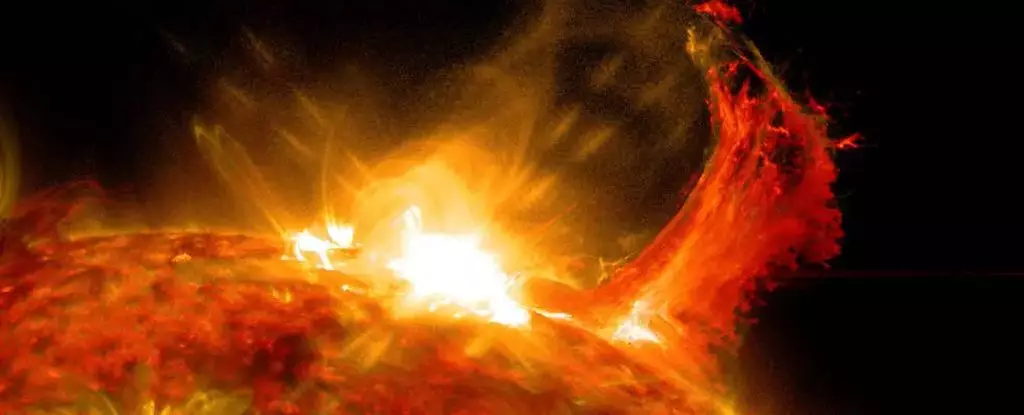At first glance, the Sun appears to be an unchanging beacon in our solar system, casting its light and heat upon the Earth with consistency. However, beneath this facade lies a tempestuous entity composed of plasma—an electrically charged gas perpetually in flux. The dynamic processes occurring within the Sun are significantly influenced by its intricate magnetic field, making solar behavior anything but predictable. Such inconsistencies present formidable challenges to solar researchers, particularly when attempting to understand and predict the phenomena associated with these solar activities.
One of the most notable and vigorous manifestations of solar turbulence are coronal mass ejections (CMEs). These colossal expulsions of plasma occur when the Sun’s magnetic field becomes unstable and causes disruptions, leading to the release of substantial amounts of energy and material into space. CMEs can travel at astonishing speeds, often hurtling towards Earth within days if their trajectory aligns with our planet. Upon impacting Earth’s magnetosphere, these bursts can produce geomagnetic storms that disrupt communications, affect GPS systems, and even lead to power grid failures. Additionally, they trigger beautiful natural phenomena such as the Northern and Southern Lights, captivating skywatchers worldwide. The ability to forecast these occurrences and gauge their impact on Earth has remained a challenging endeavor for scientists.
AI and Solar Prediction
In addressing this challenge, a team of astronomers led by Sabrina Guastavino from the University of Genoa has turned to artificial intelligence (AI) for assistance. Their recent study emphasized the potential of machine learning algorithms, trained on extensive historical solar activity data, to predict solar events more accurately. Notably, they focused on predicting the solar activity related to the anticipated geomagnetic storm in May 2024, which was linked to an area of heightened activity designated AR13664. The storms unleashed intense solar phenomena, including an X8.7 class flare, underscoring the need for effective predictive models.
By analyzing a vast array of historical data through AI, the team was able to identify complex patterns that would likely elude traditional analysis methods. Their primary objective was twofold: to predict the occurrence and evolution of solar flares, and to project the subsequent production of CMEs. This predictive approach is not merely theoretical; it was vigorously tested against the upcoming May 2024 event, yielding what the authors described as “unprecedented accuracy” in their forecasts. The methodology significantly lowered uncertainties while enhancing the reliability of predictions regarding CME travel times and the onset of related geomagnetic storms.
The implications of this research are extensive. Reliable forecasts of solar activity are crucial for maintaining the stability of modern infrastructure that relies heavily on technology. The capacity to predict and prepare for potential power outages and communication disruptions caused by CMEs can mitigate risks inherent to such cosmic events. Moreover, for astronomy enthusiasts and those captivated by natural beauty, the integration of AI forecasting may provide better insights into potential auroral displays, enriching the experience of skywatchers across the globe.
The Future of Solar Research
As solar research continues to evolve, the integration of AI and machine learning stands out as a pivotal advancement. The intersection of astrophysics and technology is not only enhancing our ability to predict the unpredictable behavior of the Sun but is also paving the way for a more comprehensive understanding of solar dynamics. Future studies may build upon these foundational insights, further refining predictive algorithms and broadening our comprehension of how solar activity influences life on Earth. Ultimately, this evolving narrative highlights the synergy between cutting-edge technology and traditional scientific inquiry, positioning us to face future solar challenges with greater foresight and preparedness.


Leave a Reply